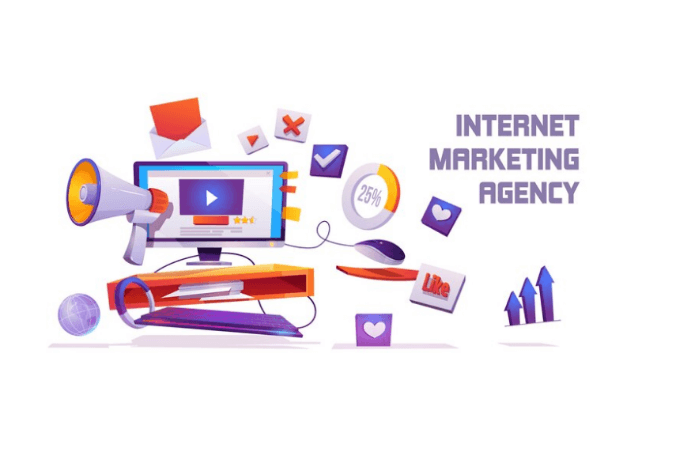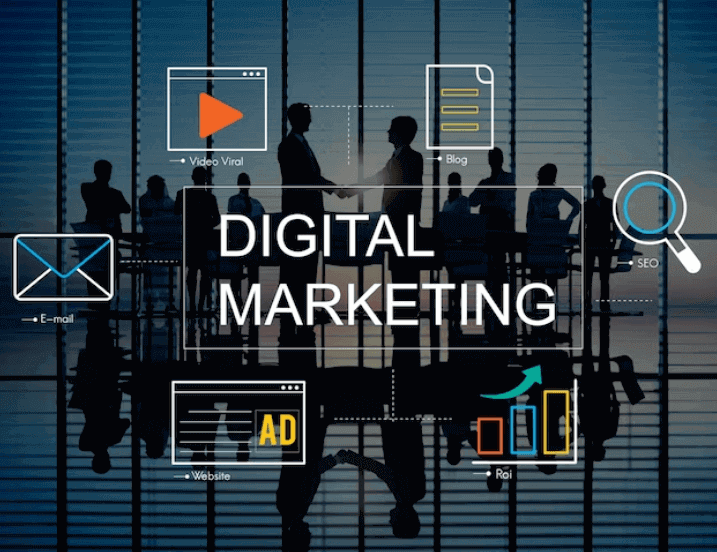
Spotify Business Development: What Do You Need to Know?
Introduction to Spotify Business Development
Spotify, a household name in the music streaming realm, has not only revolutionized how we listen to music but also exemplifies a remarkable journey in business development. Understanding the dynamics behind Spotify’s growth involves exploring its origins, strategies, challenges, and future prospects within the music streaming industry.
History and Evolution of Spotify’s Business Model
The roots of Spotify trace back to its inception in 2006 in Sweden, founded by Daniel Ek and Martin Lorentzon. Initially launched in a few European countries, Spotify quickly expanded globally, revolutionizing the music industry by offering a legal and user-friendly platform for streaming music. The evolution of its business model encompassed freemium offerings, enticing users with both free and premium subscription models.
Key Strategies in Spotify Business Development
Several crucial strategies that have fueled Spotify’s business development in the cutthroat music streaming market are:
1. Licensing and Partnerships
- Music Label Collaborations:
- Spotify has forged partnerships with major music labels like Universal Music Group, Sony Music, and Warner Music Group. So, expanding its music library to millions of songs.
- Artist Collaborations:
- Establishing direct relationships with artists has enabled exclusive releases and special content, attracting a larger user base.
- Podcast Acquisitions:
- Acquiring popular podcasts and partnering with content creators has diversified its offerings beyond music, appealing to a broader audience.
2. Technological Innovations
- Personalized Recommendations:
- Leveraging data analytics and machine learning algorithms, Spotify curates personalized playlists like Discover Weekly and Release Radar, enhancing user engagement.
- Enhanced User Experience:
- Continual improvements in the app’s interface, features like offline listening, high-quality audio streaming, and cross-device synchronization have amplified user satisfaction.
- AI and Voice Integration:
- Integrating AI-driven voice commands and smart assistant compatibility has modernized user interactions, improving accessibility and convenience.
3. Geographic Expansion and Market Penetration
- Global Reach: Spotify’s aggressive global expansion across continents and markets has solidified its position as a leading global music streaming service.
- Localized Content: Tailoring content and playlists to regional preferences and languages has facilitated deeper connections with diverse audiences worldwide.
- Partnerships with Telecom Operators: Collaborating with telecom companies for bundled offerings and special promotions has widened its subscriber base.
4. Free and Premium Model
- Freemium Model: Offering a free, ad-supported tier has acted as a powerful user acquisition tool, enticing users to upgrade to premium subscriptions for an ad-free experience and additional features.
- Student and Family Plans: Introducing discounted plans for students and family bundles has attracted a wider demographic, encouraging long-term subscriptions.
5. Data Monetization and Advertising
- Targeted Advertisements: Leveraging user data for targeted advertising has become a significant revenue stream, providing advertisers with access to a vast user base.
- Data-Driven Insights: Offering data analytics and insights to artists and labels has created additional revenue streams and strengthened partnerships within the music industry.
Spotify’s strategic prowess in licensing, technological innovation, global expansion, diversified models, and data utilization has solidified its position as a dominant force in the music streaming industry, continually adapting to evolving consumer demands and technological advancements.
Market Impact of Spotify’s Business Development
Spotify business development has left an indelible mark on the music industry, reshaping how music is consumed and distributed globally. The profound impact of its strategies and innovations has rippled through the market landscape.
Disruption in the Music Industry
- Shift from Ownership to Access: Spotify’s introduction of streaming services shifted the paradigm from owning physical or digital music to accessing a vast library of songs on-demand. This disruption altered consumer behavior and preferences.
- Decline in Piracy: By providing a legal and user-friendly platform, Spotify contributed significantly to the decline in music piracy. Its accessible, affordable streaming model became a preferred alternative for music enthusiasts.
- Revenue Distribution: Spotify’s revenue-sharing model with artists and labels, while sometimes contentious, marked a departure from traditional album sales. Streaming royalties became a primary income source for musicians.
Global Market Expansion
- Crossing Borders: Spotify’s aggressive global expansion brought music to audiences worldwide, transcending geographical boundaries. Its availability in numerous countries fostered music discovery and cross-cultural appreciation.
- Localized Content: Tailoring playlists and content to regional tastes and languages bolstered its reception in diverse markets. This localization strategy strengthened its foothold in regions with distinct music preferences.
Industry Influence and Competition
- Redefining Competition: Spotify’s rise intensified competition within the music streaming sphere, leading to innovation and service differentiation among competitors like Apple Music, Amazon Music, and others.
- Market Dominance: Despite fierce competition, Spotify maintained its position as a market leader, boasting a substantial user base and retaining its appeal through continuous innovation.
Economic Impact and Revenue Streams
- Economic Contribution: Spotify’s presence generated employment opportunities and revenue streams for various stakeholders, including artists, labels, and the tech industry.
- Advertising Revenue: While primarily a subscription-based service, Spotify’s advertising revenue from its free tier and podcast sponsorships became a substantial income source.
The business development strategies of Spotify have not only transformed how music is consumed. But also contributed significantly to the economic, cultural, and technological landscape of the music industry, setting new benchmarks for innovation and global reach.
Challenges and Obstacles Faced by Spotify
Despite its remarkable growth and success, Spotify’s journey in the world of music streaming has been characterized by a number of difficulties and obstacles. These hurdles have tested the company’s resilience in navigating a complex industry landscape.
Competition in the Streaming Industry
- Rival Streaming Services: The emergence of formidable competitors like Apple Music, Amazon Music, and Tidal presented a competitive landscape, vying for market share and exclusive content rights.
- Fragmented Market: The saturation of the streaming market with various platforms offering similar services intensified competition, requiring innovative strategies to retain and attract users.
Legal and Regulatory Challenges
- Licensing and Royalties: Negotiating licensing deals with record labels and artists while ensuring fair compensation has been a persistent challenge. Disputes over royalty rates have sometimes led to content removal or strained relationships.
- Copyright Infringement: Navigating the complexities of copyright laws globally to prevent copyright infringement and protect intellectual property rights remains a constant challenge for Spotify.
Technological and Operational Hurdles
- Platform Stability: Ensuring a seamless and stable platform for millions of users worldwide requires continuous investments in infrastructure and technology, minimizing downtimes and service disruptions.
- Data Privacy and Security: Safeguarding user data and ensuring compliance with evolving data privacy regulations pose ongoing challenges, demanding robust security measures and compliance frameworks.
Evolving Consumer Preferences
- Changing User Demands: Adapting to evolving user preferences and consumption patterns necessitates constant innovation in features, content curation, and user experience enhancements.
- Shifts in Music Consumption Habits: Understanding and responding to shifts in how audiences discover, consume, and engage with music—whether through playlists, podcasts, or emerging formats—is an ongoing challenge.
Global Expansion Complexities
- Diverse Cultural Landscapes: Penetrating new markets with distinct cultural preferences and consumption habits requires tailored approaches and localized content, adding complexity to expansion efforts.
- Regulatory Compliance: Complying with diverse regulatory frameworks across multiple regions and countries involves navigating legal complexities and adapting to varied market conditions.
Overcoming these challenges demands strategic agility, innovation, and a deep understanding of the intricacies of the music industry and global markets. Spotify’s ability to address these obstacles will continue to shape its trajectory and influence in the music streaming sphere.
Future Prospects and Innovations for Spotify
Spotify’s forward-looking approach involves a commitment to continuous innovation and adaptation to meet evolving consumer demands and technological advancements. Several key prospects and innovative endeavors mark the company’s future trajectory.
Predictions for Business Development
- Advancements in Personalization: Further advancements in AI-driven algorithms and machine learning will enhance personalized recommendations. Thus, curating tailored playlists and discovery features.
- Expansion into Podcasting: Continued investments and acquisitions in the podcasting space will diversify content offerings. Thus, aiming to establish Spotify as a premier destination for audio entertainment beyond music.
Emerging Technological Trends
- Immersive Audio Experiences: Experimentation with immersive audio technologies like spatial audio and high-fidelity streaming options will cater to audiophiles seeking enhanced sound quality.
- Voice-Activated Features: Deeper integration of voice-activated commands and smart assistant functionalities will simplify user interactions, offering seamless navigation and control.
Global Market Expansion
- Focus on Untapped Markets: Strategic penetration into emerging markets with a focus on Asia, Latin America, and Africa will drive user growth through localization and tailored content.
- Partnerships and Collaborations: Strengthening partnerships with telecom operators and local content creators will facilitate market entry and enhance user engagement in new regions.
Artist-Centric Innovations
- Direct Artist Engagement: Empowering artists with tools for direct engagement with fans, exclusive content releases, and data insights will foster stronger artist-user connections.
- Fair Compensation Models: Experimentation with new royalty models and transparent payment structures will address artist concerns and ensure fair compensation for their creative work.
Technological Evolution in User Experience
- Augmented Reality Integration: Exploring augmented reality features for immersive music experiences, concerts, and interactive content will redefine user engagement.
- Enhanced Social Features: Introducing social listening experiences and interactive elements will create communal music experiences, fostering user interaction and community building.
Spotify’s future hinges on its ability to embrace technological advancements, adapt to changing market dynamics, and cater to the evolving preferences of its diverse user base. Innovation, expansion, and user-centric approaches will continue to shape its journey in the competitive landscape of music streaming.
Conclusion
Journey of spotify business development stands as a testament to innovation and resilience in an ever-evolving industry. Its strategies, challenges, and forward-looking approach position it as a trailblazer in the world of music streaming.
FAQs
- Does Spotify offer services specifically for businesses?
- Yes, Spotify offers Spotify for Business, providing licensed music for commercial use in various establishments.
- How does Spotify handle artist royalties?
- Spotify pays royalties to artists based on the number of streams their music receives, although the exact amount varies.
- Can Spotify’s business model sustain its growth amidst competition?
- Spotify’s continuous innovation and global presence contribute to its competitive edge in the market.
- What are some challenges Spotify faces in expanding into new markets?
- Legal and licensing issues, as well as differing music consumption habits, pose challenges when entering new markets.
- What innovations can users expect from Spotify in the future?
- Users can anticipate more personalized experiences through AI-driven recommendations and improved features.
Visit our website for more. Click here: “Quick Trend Insights“.





